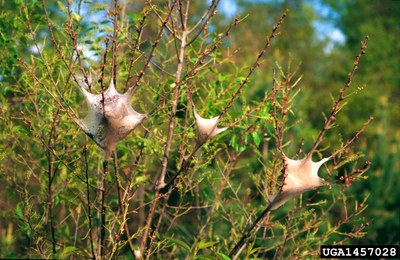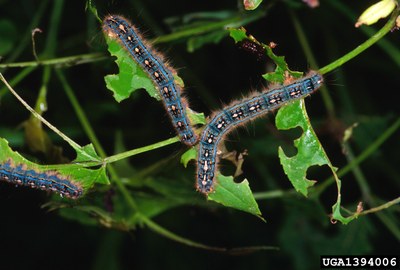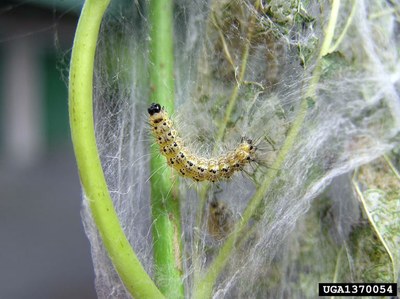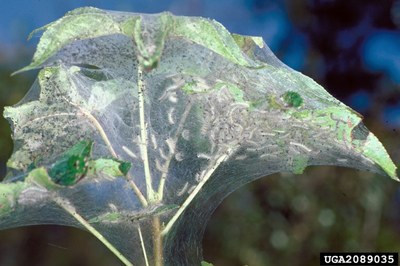Hyphantria cunea
Symptoms
- Fall webworm caterpillars are active from late July into September.
- The hairy caterpillars are yellow to green and have two rows of black spots on their backs.
- Fall webworm skeletonize leaves that are enclosed within a webbed shelter.
- Their webs differ from those of tent caterpillars in that the webbing covers branch ends rather than tree crotches.
Fall webworm caterpillars with distinctive black spots. (Milan Zubrik, Forest Research Institute-Slovakia, Bugwood.org)
Webbing covers branch ends. (Lacy L. Hyche, Auburn University, Bugwood.org)
Management and other important facts
- Mature trees can handle fall webworm infestations and control measures usually are not required; this is more of an aesthetic issue.
- Fall webworm infestations in younger trees should be removed to prevent severe defoliation.
- Webbing and caterpillars can be removed with a stick and dropped into a pail of soapy water.
- Chemical control usually is not effective because the webbing protects the caterpillars.
Author: Esther McGinnis





